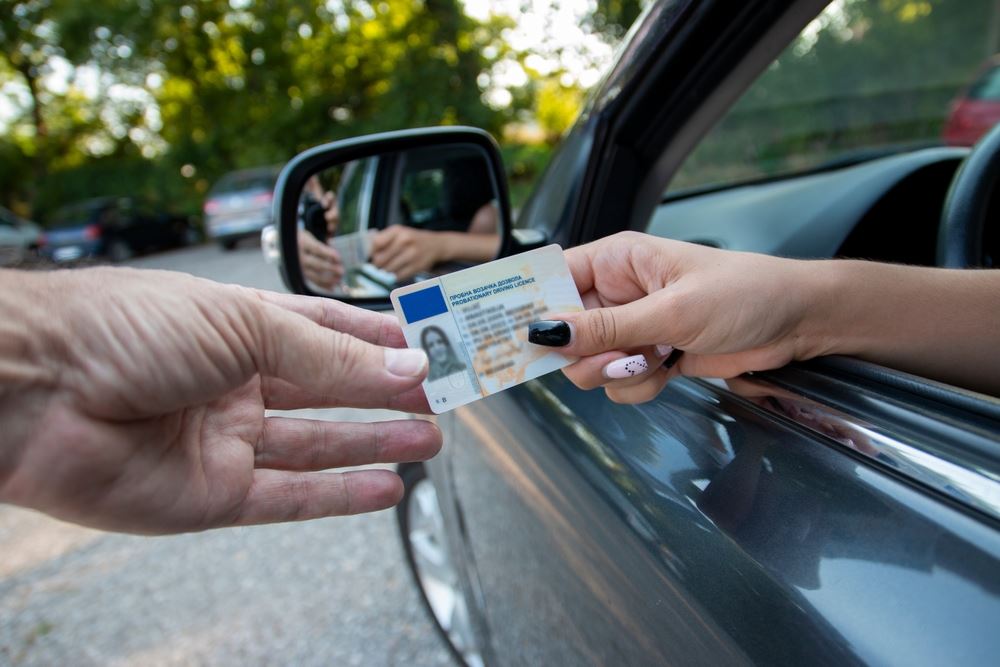An underage OVI (operating a vehicle under the influence—the Ohio equivalent of a DUI or DWI) comes with substantial consequences. Young drivers and their families must know about these penalties and the importance of legal guidance in such situations.
Understanding Underage OVI in Ohio

In Ohio, the laws surrounding underage drinking and driving are strict and aim to discourage this behavior to ensure safer roadways for everyone. Ohio’s approach to underage OVI reflects a commitment to road safety and the welfare of its young residents.
The Reduced BAC Limit for Underage Drivers
- Stricter BAC Standards for Underage Drivers: For adults 21 and over, the legal limit for blood alcohol concentration (BAC) is 0.08 percent. However, for individuals under 21, Ohio law sets a much lower BAC limit of 0.02 percent. This significant reduction in the legal limit for underage drivers underscores the state’s zero-tolerance stance on underage drinking and driving.
- Rationale Behind the Lower Limit: The rationale for the lower BAC limit for underage drivers is multifaceted. It recognizes the increased risks associated with inexperienced drivers consuming alcohol and acknowledges the legal drinking age. By setting the limit at 0.02 percent, Ohio law accounts for incidental alcohol consumption that might not equate to impairment but still sends a clear message against underage drinking.
- Promotion of Safer Roads: The primary goal of this strict regulation is to promote safer roads. Statistics and research consistently show that alcohol consumption significantly impairs driving ability, and the risks are even higher for inexperienced or underage drivers. By enforcing a lower BAC limit, Ohio aims to reduce the likelihood of accidents caused by impaired driving among the underage population.
Penalties for Underage OVI
Below are the different categories of penalties for underage OVI in Ohio:
For BAC Between 0.02 percent and 0.08 percent
Underage drivers caught with a BAC in this range can face charges of Operating a Vehicle after Underage Alcohol Consumption (OVUAC), a fourth-degree misdemeanor.
Penalties include:
- Up to 30 days in jail.
- A fine of up to $250.
- Four points on the driver’s license.
- License suspension ranging from 90 days to two years.
For BAC of 0.08 percent or Higher
If the BAC is 0.08 percent or more, the underage driver may face charges similar to an adult, which is a first-degree misdemeanor.
This can lead to:
- Fines up to $1,075.
- Three to 180 days in jail or participation in a treatment program.
- Six points on the driver’s license.
- License suspension for one to three years.
High-Tier BAC or Repeat Offenses
More severe penalties apply for BAC levels over 0.17 percent or in cases of repeat offenses, underlining the increased risk and seriousness of such violations.
Additional Consequences
Beyond fines and license suspension, underage drivers might also face:
- Court costs and expenses for driver’s training or treatment programs.
- Additional penalties for traffic violations noted during the incident, such as swerving or speeding.
- Mandatory drug and alcohol treatment, Ohio OVI license plates, and installing an ignition interlock device.
Driver Intervention Program (DIP) in Ohio
In Ohio, minors charged with OVI may face the requirement of participating in driver intervention programs or other treatment programs as part of their penalties.
Understanding the nature and cost of these programs is important for minors and their guardians.
- Nature of the Program: The Driver Intervention Program (DIP) in Ohio is often a possible alternative to the mandatory jail time for first-time OVI offenders. This program typically lasts for 72 hours, running from Thursday evening to Sunday evening. It includes an educational curriculum designed to change behaviors and recognize thinking errors related to impaired driving.
- Cost of the Program: The cost of the DIP can vary depending on the facility. For instance, a private room at Staybridge for the program costs around $625, while a shared room at Wingate is approximately $485. These costs are significant and add to the overall financial impact of an OVI charge on a minor.
- Mandatory Minimum Penalty: For an OVI offense, there is a mandatory minimum penalty that includes three days in jail or participation in a driver intervention program. This is in addition to a one-year driver’s license suspension, a fine, court costs, and points on the driver’s license.
- Additional Costs: Beyond the program fee, there are other financial implications to consider. These include the fine for the OVI offense itself (around $375), court costs (approximately $125), and a license reinstatement fee (about $475). Moreover, car insurance premiums are likely to increase following an OVI conviction.
Considerations for Minors
For minors, these programs and their associated costs can be particularly burdensome. They and their families must be aware of these obligations when facing an OVI charge.
Additionally, the educational aspect of these programs aims to address the behaviors and decision-making processes that lead to impaired driving, which can be particularly impactful for younger individuals.
Legal Support
Given the complexity and the potential long-term impact of an OVI charge, seeking legal assistance is advisable.
A knowledgeable attorney can provide guidance on these requirements and possibly work towards reducing the charges or penalties.
Potential Impact of an OVI on Scholarships in Ohio

For students in Ohio, facing an OVI charge can have far-reaching consequences, extending into their educational pursuits, particularly when it comes to scholarships.
Understanding the potential impact of an OVI on scholarships and financial aid is crucial for students and their families.
Impact on Private Scholarships
Many private scholarships have specific codes of conduct that recipients must follow. These codes often include clauses about maintaining a clean legal record.
An OVI conviction can be seen as a violation of such codes, leading to possible repercussions on scholarship eligibility. In some cases, students might not only lose their future scholarship funds but can also be required to repay any scholarship money they have already received.
Federal Financial Aid Considerations
Regarding federal financial aid, such as Pell grants, loans, and work-study programs, the rules are slightly different. The Free Application for Federal Student Aid (FAFSA) requires disclosing drug convictions but does not specifically ask about drunk driving convictions.
Therefore, an OVI may not directly impact federal financial aid. However, staying updated on any changes to these regulations is important.
Additional Educational Expenses
Apart from scholarship concerns, an OVI conviction can lead to other education-related expenses. For instance, some colleges may restrict students with criminal records from living on campus, potentially leading to increased housing costs if a student has to find off-campus accommodation.
Importance of Understanding Scholarship Terms
Students who receive scholarships should thoroughly understand the terms and conditions attached to these funds. Knowing whether an OVI conviction can impact their scholarship is essential for maintaining their financial aid.
Legal Support and Advice
Given the potential impact of an OVI on educational and financial prospects, students should seek legal support if they are facing such charges. An Ohio OVI attorney can provide guidance on how to overcome these challenges and minimize the impact on a student’s educational journey.
Ohio Revised Code on Fake IDs
According to Ohio Revised Code section 4507.30(c)(a), possessing, attempting to use, or displaying a fake ID that is fictitious or not one’s own is considered a first-degree misdemeanor.
This includes situations like attempting to use a fake ID to purchase alcohol, which constitutes misrepresenting one’s identity and can be considered fraud.
Penalties for Possessing or Using a Fake ID
- Criminal Charges: Possessing a fake identification document is a first-degree misdemeanor offense in Ohio.
- Fines: Individuals caught with a fake ID may face fines of up to $1,000.
- Jail Time: There is a possibility of jail time, up to six months, for those caught with a fake ID.
- License Suspension: For those caught with a fake ID, there may also be a suspension of the driver’s license.
Enhanced Penalties for Identity Fraud
Using an ID that belongs to a real person, as opposed to a purely fictitious one, is considered identity fraud under Ohio law.
This felony comes with even harsher punishments:
- Up to a year in prison
- Fines of up to $2,500
Ohio treats the use of fake IDs seriously, with the law imposing significant penalties for mere possession. These penalties can include large fines, potential jail time, and license suspension.
Additionally, using an ID belonging to another real person escalates the offense to identity fraud, a felony, which carries even more severe penalties. Understanding these consequences is crucial for young individuals in Ohio, particularly those under 21, who might use fake IDs for purchasing alcohol or other age-restricted activities.
In Ohio, the legal consequences for minors in possession of alcohol (MIP) are outlined in the Ohio Revised Code and involve different penalties depending on the age of the offender and the specifics of the offense.
Ohio Revised Code on Minor in Possession (MIP)

Ohio Revised Code section 4301.69(E)(1) prohibits underage individuals from knowingly ordering, paying for, sharing the cost of, attempting to purchase, possessing, or consuming any beer or intoxicating liquor in public or private places. It also prohibits being under the influence of such beverages in public places.
Exceptions apply to underage individuals supervised by a parent, spouse (who is not underage), or legal guardian, or if the consumption is for established religious purposes or prescribed by a physician.
Diversion Program Option
The court may offer a diversion program for first-time offenders, holding the complaint in abeyance pending successful program completion. However, if a minor has previously been diverted for an MIP offense, they are ineligible for this option.
Successful completion of the program can lead to the dismissal of the complaint and the sealing of the child’s record under sections 2151.356 to 2151.358 of the Revised Code.
Failure to complete the program satisfactorily results in the court proceeding with the complaint.
Penalties Based on Age and Specifics of the Offense
- Minors Under 18 Years of Age: For minors under 18, the court can suspend their temporary instruction permit, probationary driver’s license, or driver’s license for a period of at least six months and up to one year if they are found guilty of a MIP offense. Repeat offenders may be committed to youth detention facilities. If they are 15 1/2 years of age or older and do not have a driver’s permit or license, they will not be eligible to receive such a permit or license for six months. If they are under 15 1/2, they cannot receive a temporary instruction permit until they turn 16.
- Minors 18 to 21 Years of Age: For individuals between 18 and 21 years old, an MIP offense is a first-degree misdemeanor, punishable by up to 180 days in jail and a fine of up to $1,000. Additionally, if the minor is charged with consuming beer or intoxicating liquor in a motor vehicle, this constitutes a fourth-degree misdemeanor, punishable by up to 30 days in jail and a fine of up to $250. Possession of an open container of alcohol in the vehicle is a minor misdemeanor, punishable by a fine of up to $150.
Additional Penalties Under the Ohio Revised Code
- Third-Degree Misdemeanor: Violating division (E)(1) of section 4301.69 is considered a third-degree misdemeanor, with additional penalties including driver’s license suspension for offenders under 18 years of age if the offense occurred while they were operating or a passenger in a motor vehicle.
- Fines and Imprisonment: Offenders can be fined between $500 and $1,000 and may face imprisonment for a term of not more than six months.
Understanding these laws and penalties is important for young people in Ohio, as violations can lead to significant legal consequences, including criminal charges, fines, potential jail time, and loss of driving privileges.
Contact an Ohio Underage OVI Lawyer
Underage OVI charges in Ohio carry not only immediate penalties but also long-term implications for future employment and insurance rates. Legal assistance is necessary in these cases.
An attorney can guide you through the legal process, challenge the charges, and work to minimize the offense’s impact on the young person’s future.


